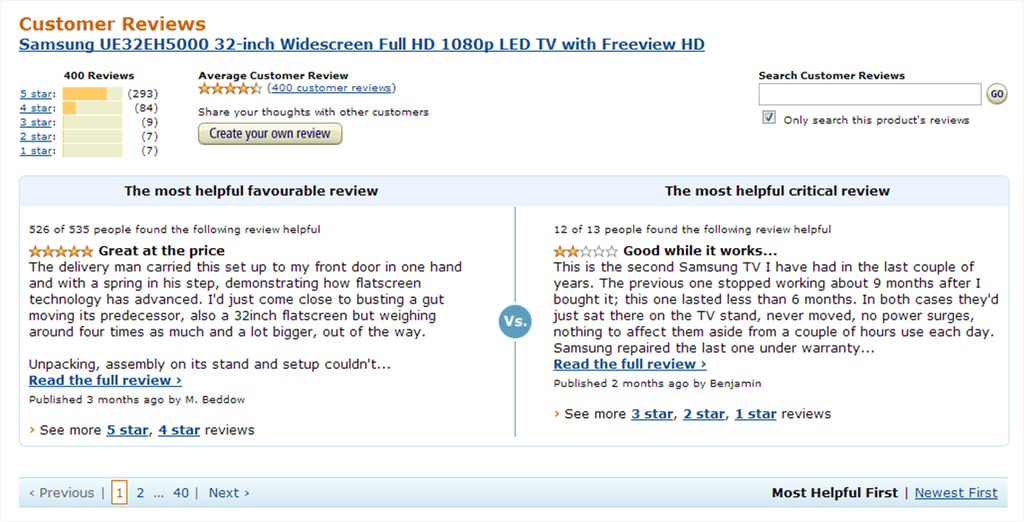The online customer experience is one of the highest strategic priorities for most companies today. Online net promoter score, or word-of-mouth, is now easily measurable and far more of a visible metric to business success, as customers leave their reviews directly on company websites in sections dedicated to collecting customer service, product and experience reviews.
Public, online negative reviews filled with emotional language is many companies’ nightmare and when they happen, while customer reactions cannot be censored, companies can and try to recover from them by showing quick responsiveness and genuine attempts to compensate. The hope is that other customers will witness their care and look past their mistakes or flaws. Social media teams trained in customer care are at the ready for the most successful businesses.
However, recovering from negative online reviews may be more of a user experience domain than customer care and service. Human psychology shows why this may be the case.
A recent study published in the Journal of Economic Psychology* and subsequently reported in The British Psychological Society Research Digest suggests that the order in which customer reviews appear does in fact impact final customer decision making.
The researchers conducted two studies to assess whether the order of appearance of a review affects the reader’s perception and attitude towards the company.
In one of the two studies participants were presented with 5 Trip Advisor reviews for a hotel. Part of the participants read the reviews ordered from negative to positive and the other in reverse order: positive to negative. When asked to state their attitude towards the hotel, participants showed more favour for the hotel when they read the more positive reviews first. This remained the case even when the positive reviews were outdated (more than a year old) and the newer ones were negative. In other words there is a positive halo effect that works in favour of the company when the first review customers are exposed to, is a positive one. Interestingly, this does not apply when the first reviews are negative i.e. there is no negative halo that lingers when customers are prompted with negative reviews first. What this means is that there is a hidden opportunity to sway customers’ attitude if only the order of the reviews can be managed somehow to ensure that positive and then negative reviews are displayed. The other study supported the evidence.
As I read the findings I thought about the way Amazon (often quoted for their superior online customer experience) organise their product reviews. Maintaining the sense of fair representation, Amazon display the most helpful positive and most helpful negative customer review under the product, in that exact order: positive and then negative( as the human eye reads from left to right). I cannot say whether this was Amazon’s plan and design but if the study is correct, they are doing companies a great favour by creating this lingering positive effect on customers’ impression and attitude.




